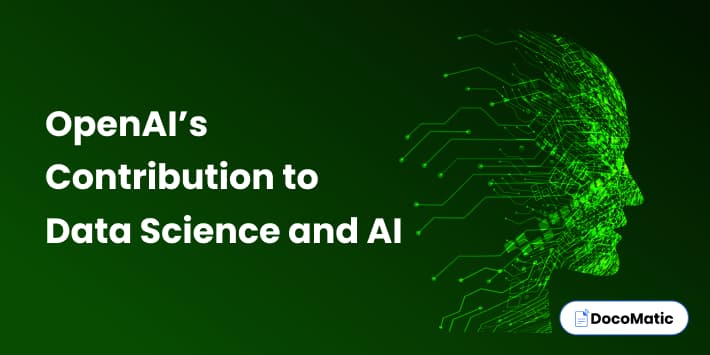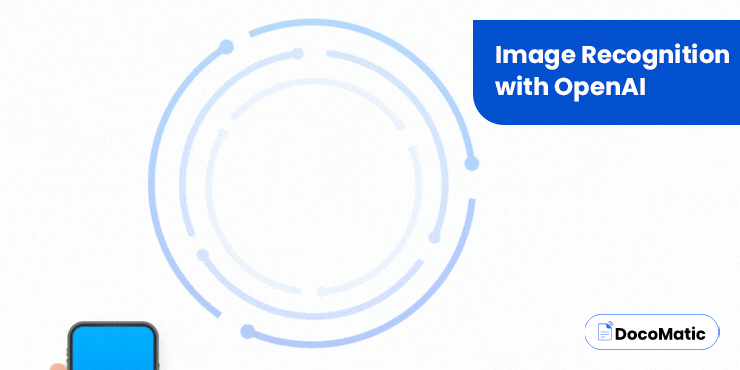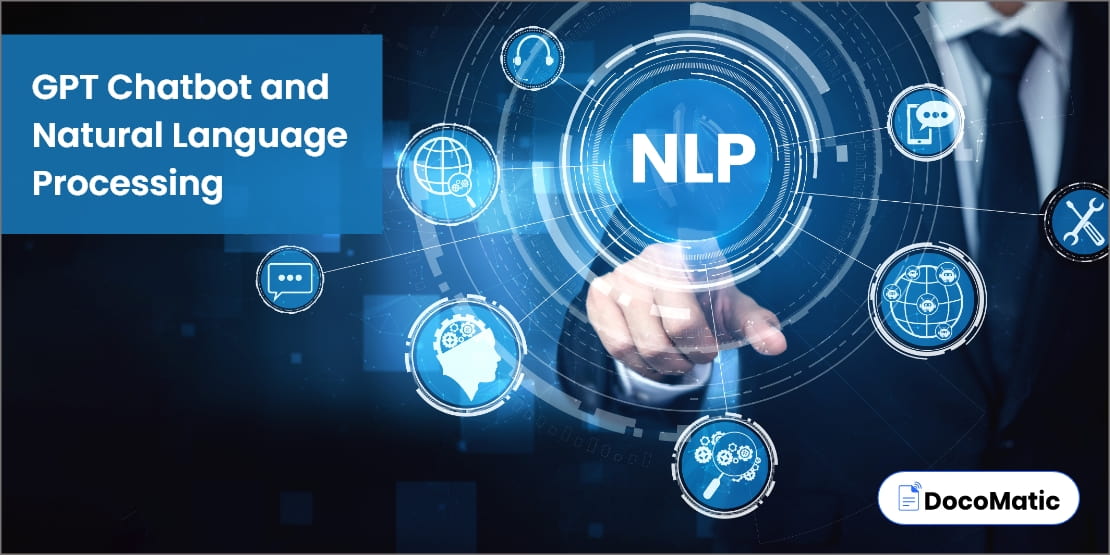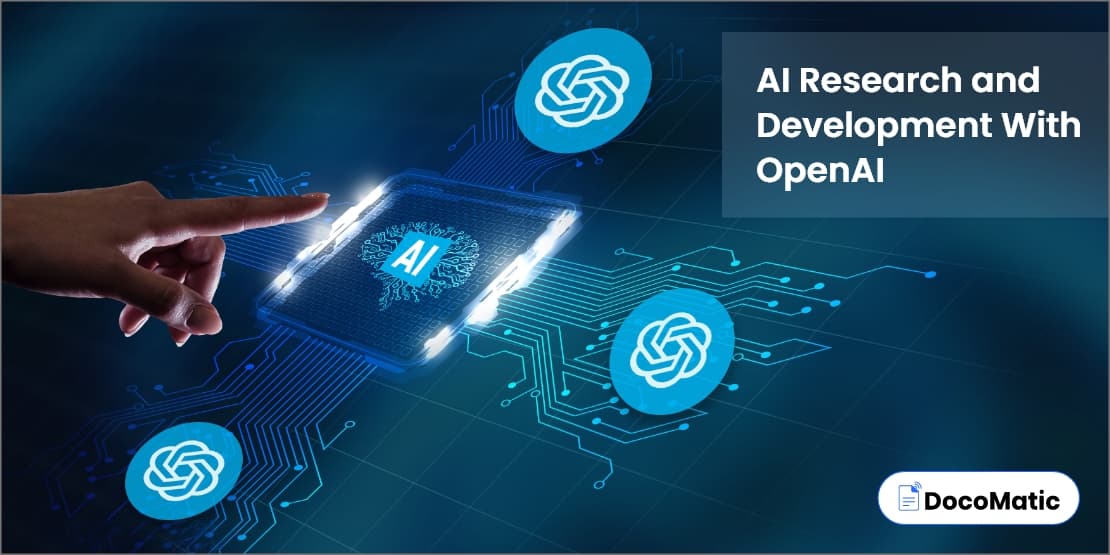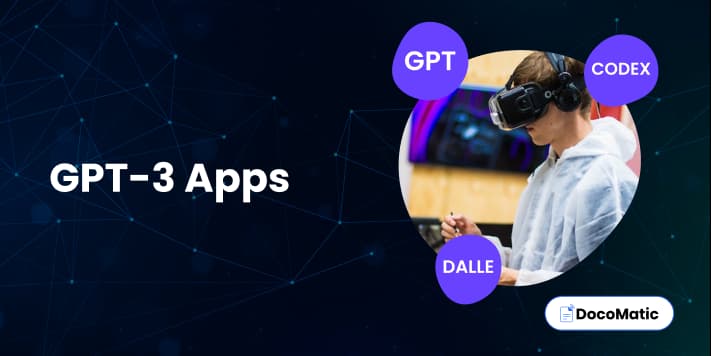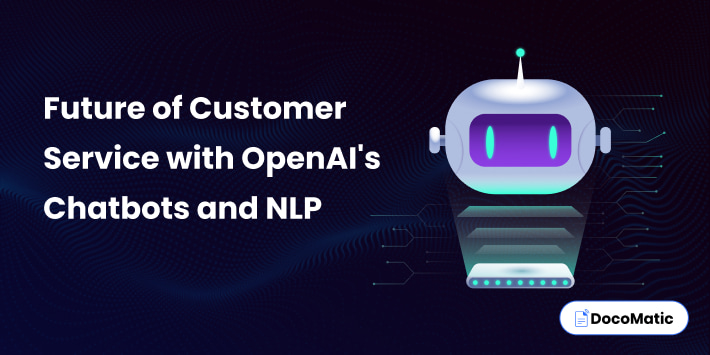Artificial Intelligence (AI) and data science are two quickly growing technologies that are transforming our surroundings. While AI is concerned with creating intelligent computers that are capable of carrying out activities that ordinarily require human intelligence, data science is concerned with drawing insightful conclusions from enormous amounts of data.
OpenAI, a company founded in 2015 is significantly advancing the fields of artificial intelligence and data science. It strives to advance AI in a way that is both beneficial and secure for everyone. Also, the size of the worldwide AI market is anticipated to increase at a CAGR of 37.3% by 2030.
In this blog, we’ll explore the relationship between data science and AI and show how each is being advanced through OpenAI. So let’s get started.
Table of Content
What is OpenAI?
OpenAI is an artificial intelligence research centre. The basic goal of OpenAI is to advance AI in a way that upholds human values and is also safe and transparent.
Moreover, OpenAI has created natural language processing models like GPT-3 that can produce text that resembles that of a person. Additionally, OpenAI is currently engaged in a number of projects that advance our understanding of AI and its capability to address complex problems.
OpenAI is a major player overall, advancing both data science and artificial intelligence. So why not become familiar with the AI methods employed by OpenAI?
What are the Different AI Techniques Used by OpenAI?
OpenAI utilizes a variety of AI methodologies to build its robust AI systems and models. Some of the techniques implemented by OpenAI are:
1. Deep learning
Deep learning is a subset of machine learning that uses artificial neural networks to evaluate and classify data. Essentially, they are modelled after how the human brain works and is organized. It can be used to process difficult data, such as images, videos, and sounds.
2. Reinforcement learning
It is a sort of machine learning where an AI agent is trained to carry out necessary activities. The agent receives feedback for each action in the form of a reward or a punishment. To adapt the behaviour for upcoming interactions, this feedback is used. To do challenging tasks, like playing video games or controlling robots, OpenAI has created sophisticated reinforcement learning algorithms.
3. Robotics
It combines elements of engineering, computer science, and other disciplines. OpenAI is using robotics to create intelligent agents who can manipulate things and carry out assigned tasks. For instance, OpenAI uses reinforcement learning and other AI methods to train robots how to complete challenging tasks.
4. Generative models
Generic models (generative models) have the ability to produce new data that is comparable to the data they were trained on. It is an AI technique with many applications, including language processing, computer vision, and robotics.
For instance, the potent generative model GPT-3 (developed by OpenAI) is capable of producing text that resembles human speech. Open AI provides comprehensive documentation on how to use GPT-3, making it simple for developers to incorporate it into their projects.
These were some of the techniques used by OpenAI that are changing the way we see and utilize data. From enhancing language processing to enabling improved decision-making in robotics, OpenAI’s contributions are having a significant impact on the field of data science and AI. Let us unfold it.
OpenAI’s Contribution to Data Science and AI
Data science and artificial intelligence have benefited greatly from OpenAI’s contributions. Key contributions include the following:
1. Deep learning advancement
Deep learning, a part of machine learning, includes neural networks. Open AI has made huge contributions in research and advancement of neural networks. Several deep learning approaches have been invented by OpenAI, including the Generative Pre-trained Transformer (GPT) model, which can produce excellent natural language content.
Additionally, OpenAI has contributed to the creation of methods for deep learning that have produced innovations in speech recognition, computer vision, and other fields.
2. Learning through reinforcement
OpenAI has led research in reinforcement learning, a kind of machine learning that includes teaching agents to make decisions depending on input from their surroundings. More sophisticated and flexible AI systems have resulted as a result of this.
Some of the most notable accomplishments by OpenAI is their significant contributions to the game-playing and robotics sectors.
For instance, Robotic systems have made it possible for machines to do tasks like stacking blocks and resolving a Rubik’s Cube purely using visual input. It made it possible for robots to carry out a variety of jobs in unpredictable conditions.
3. Considering ethical issues
OpenAI is not only limited to technical advancements, but they also actively consider ethical concerns too. They believe that AI should be created in a safe and responsible manner that is helpful for humans.
Furthermore, OpenAI has spoken out about the possible risks of artificial intelligence. The ethical questions related to the creation and application of AI have received proactive attention from OpenAI. For example, the company has created a set of guidelines for the responsible and ethical usage of AI called an AI safety policy.
4. Generic models
OpenAI has significantly advanced the field of generic models (generative model) through the creation of various models, including GPT-3 and DALL-E. It has also advanced in optimizing generative models for certain tasks. This entails training the models on a more focused dataset, which can enhance the quality of the samples that are generated.
Moreover, production of music and visual art, the creation of video games, and even the discovery of new drugs is being benefited by OpenAI. Also, high-quality photos, music, and text can be produced using this model.
5. Robotics
AI has also contributed to the field of robotics by creating sophisticated algorithms that allow robots to take in data around them and carry out difficult jobs. Now robots with AI are being used to finish hard tasks, such as resolving Rubik’s cubes, navigating mazes, and even playing video games.
The development of reinforcement learning algorithms has been one of OpenAI’s major contributions to the robotics field. These algorithms are a major improvement over conventional programming techniques because they allow robots to learn by trial and error.
Above section briefed us about how OpenAI is contributing to data science and AI. Going ahead, we will learn about applications of AI in data science.
Applications of AI in Data Science
Data science, which is the process of deriving knowledge and insights from data, has a wide range of applications for artificial intelligence (AI). Data scientists can utilize machine learning algorithms and other AI techniques to draw conclusions from massive amounts of data that would be impossible to do manually.
Following are some of the applications of AI in data science:
1. Predictive modeling
Data scientists utilize the technique of predictive modelling to examine historical data and forecast future results. It has the ability to transform many industries and improve the accuracy and efficiency of various tasks. Open AI has made a contribution to this sector, by creating sophisticated algorithms and models that can evaluate vast amounts of data and make precise predictions.
For example, the language model GPT-3 from OpenAI, utilizes predictive modeling to produce human-like responses to prompts based on its analysis. Further, by utilizing this technology, the accuracy and effectiveness of activities like language translation and text summarization could be improved.
2. Natural language processing
The primary focus of “Natural Language Processing” (NLP) is the way computers and language interact. The algorithms of AI can be used to analyze and extract information from unstructured data, such as text, audio, and video. Other applications, such as sentiment analysis, chatbots, and speech recognition, can benefit from this.
For instance, OpenAI has also developed models for providing answers. Using the extensive database of queries and answers, it entails replying to consumer inquiries.
3. Fraud detection
Fraud detection is one of the key applications of AI in data science. AI systems are trained to scan vast data in real-time in order to spot suspicious conduct, such as odd transaction patterns, unexpected changes in user behaviour, and false claims.
With the aid of AI-powered fraud detection systems, organisations can immediately spot fraudulent actions and take the appropriate action. This ensures the organization’s safety and financial stability. This has uses in e-commerce and financial services, among other applications.
4. Voice and image recognition
AI has significantly improved voice and image recognition through the past few years. The future of our interactions with auditory and visual data could be completely transformed by advanced OpenAI techniques.
A variety of applications, including security surveillance, self-driving cars, and medical imaging, can benefit from the analysis and recognition of photos and videos using AI algorithms. They have numerous uses, ranging from speech-to-text transcription to fraud detection.
The applications for artificial intelligence in data science mentioned above are only a few. And as AI advances, we may expect to see even more innovative artificial intelligence applications in the future.
FAQs
Data science is a multidisciplinary field that combines scientific techniques, procedures, algorithms, and systems to gather information from both structured and unstructured data. It uses a variety of methods, including data mining, machine learning, statistical analysis, and predictive modeling, to find patterns and trends in data and offer useful information to businesses. The ultimate goal of data science is making sense of data, producing insightful discoveries, and making rational decisions.
The experts who can extract insights from vast volumes of data are known as data scientists. They are skilled at programming, statistics, domain knowledge, and mathematics. Large data sets are collected, cleaned, and analyzed by data scientists to look for patterns and trends that could help organizations in making wise decisions.
Artificial intelligence (AI) is the simulation of human intelligence in machines, allowing them to carry out operations like thinking, learning, observation, and decision-making that would ordinarily need human intelligence.
Contrarily, the goal of machine learning (ML), a branch of artificial intelligence (AI), is to create systems that can learn from data and enhance their performance without being explicitly programmed.
SBelow are some of the potential risks associated with the development of AI:
- Loss of jobs due to automation
- Misuse of AI technology
- AI-related ethical issues
- Risks associated to Cybersecurity
- Lack of transparency in AI-decision making
Businesses and organizations can profit from OpenAI’s research by employing their AI models and tools to enhance operations, automate processes, and derive insights from data. OpenAI’s language models can be used to create chatbots and virtual assistants to improve customer service. Further, its predictive modelling can assist companies in improving sales projections and supply chain efficiency. Overall, businesses can get a competitive edge by increasing productivity, cutting expenses, and improving customer experiences.
Conclusion
The work OpenAI is performing is simply amazing. OpenAI is a brilliant illustration of what is achievable when we combine cutting-edge technology with a deliberate and ethical research methodology. They have made advancements in the disciplines of data science and AI that can only be described as transformative.
They are also leading the way in developing AI in a responsible and ethical manner, which is maybe even more significant. Significant advances in computer vision, natural language processing, and other important fields will ensure that AI will play a bigger and bigger part in our lives in the future.
